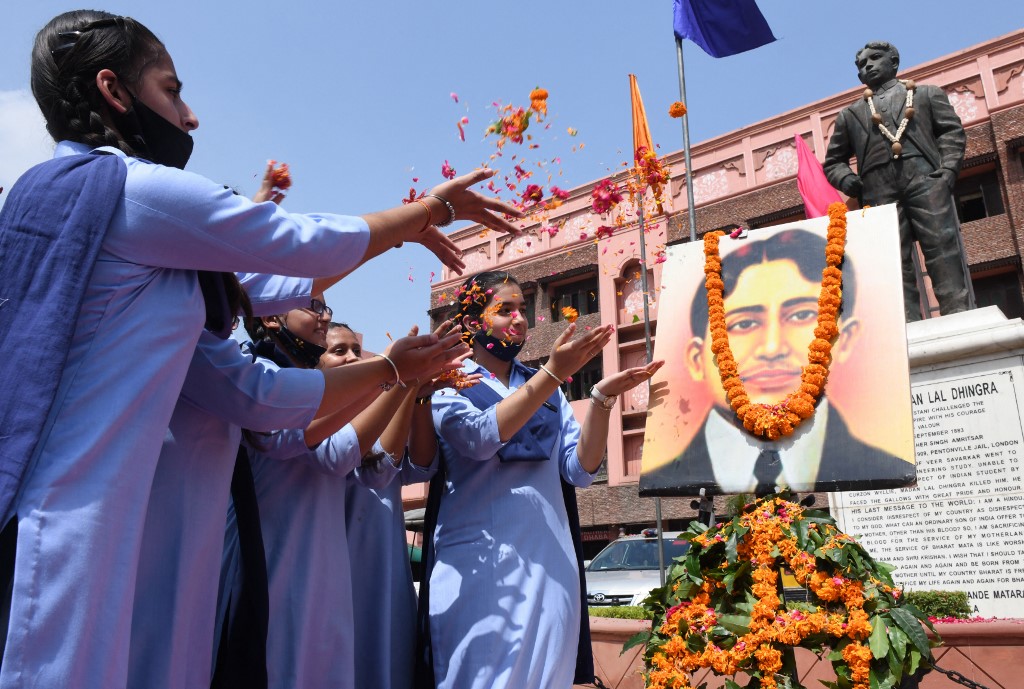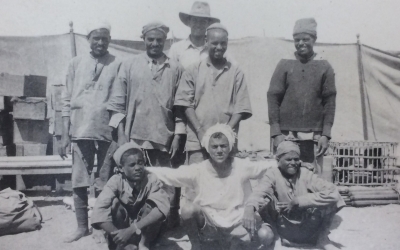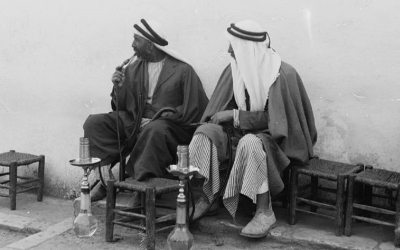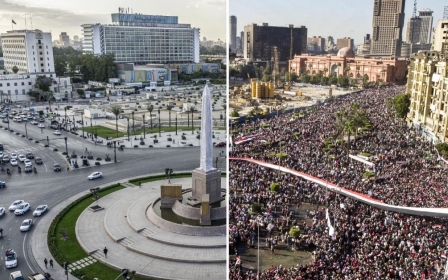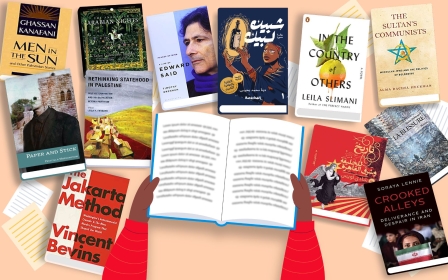Assassins, anarchists and anti-British activism: Dispatches from the Egyptian underground

On the evening of 1 July 1909, the loyalist National Indian Association of the British Imperial Institute in South Kensington hosted a party for Indian students residing in London.
Most South Asians studying abroad in London at the time were preparing for service in the British Raj. These future imperial civil servants were placed in loco parentis with their English landlords' families, and many looked at their time in London as an opportunity to mix with English high society in ways that would not have been possible back at home.
Madan Lal Dhingra was one of the guests attending that night. He arrived, according to historian and archival storyteller Tim Harper, "by cab, around 9pm, smartly turned out in a lounge suit and blue turban".
Harper's emphasis on the prominence of anarchism as a praxis in the global anti-colonial underground casts the history of Egyptian anti-British activism in a new light
But Dhingra was not a student bound for service in the British Raj. He had been swept up in the nascent Indian anti-British movement, which was at that time seeking swaraj, or "home rule".
In 1904, Dhingra was kicked out of the Government College in Lahore for organising a protest. His father's connections gave him a second chance, and in 1906, he went to study abroad, enrolling as an engineering student at University College London.
Dhingra took up residence at Shyamji Krishna Varma's Highgate villa known as India House. It was a kind of radical alternative to the paternalistic system of the Raj, and became a magnet for Indian anti-colonial activists like Vinayak Savarkar, M P T Acharya and Virendranath Chattopadhyaya.
At around 11pm, Dhingra struck up a conversation with Sir William Curzon Wyllie, a longtime employee of the Raj who was at that time the head of the secret police. Dhingra drew a Colt revolver from his front jacket pocket and fired four shots into Wyllie's chest. Hours later, he died from his wounds, and Dhingra would be charged with assassination in a high-profile show trial of empire.
Harper recounts this episode, along with many other transnational tales, in his magisterial book, Underground Asia: Global Revolutionaries and the Assault on Empire (2021). It is a winding story that takes readers on a tour through the interconnected anti-colonial revolutionary undergrounds of South, East and Southeast Asia.
Politics of exile
Following the global itineraries of people like Dhingra, Harper breaks out of nationally siloed historiographies and shows how anti-colonial revolution in the early 20th century was spurred on by the increasing mobility of the time to form a unique politics of exile abroad.
This style of activism was vaguely connected to the criminal underworld, was thoroughly steeped in anarchist philosophy, and pioneered violent political tactics alongside other forms of anti-colonial action.
Unfortunately, people from the Middle East and North Africa do not find much room to speak in Harper's already densely-packed 657 pages. Nevertheless, I was struck by how his emphasis on the prominence of anarchism as a praxis in the global anti-colonial underground casts the history of Egyptian anti-British activism in a new light.
India House was no doubt a crucial node in global anarchist networks. Peter Kropotkin, the most read and translated anarchist theorist at the time, actually met India House regular Har Dayal when he was a student at Oxford. According to Harper, Kropotkin defined anarchism as a "collective of individual acts", including "a spectrum of different approaches to economic and social organisation", such as mutual aid, trade unions and community education.
Anarchist tactics included violence, and Russian Narodniks would pioneer assassination as an anti-colonial political action during Kropotkin's formative years. By seizing the ability to kill in their own hands, anarchists from the US to Andaman saw assassination as a means to break the state's monopoly on the use of force.
Kristin Shawn Tassin's excellent dissertation on the transnational dimensions of Egyptian anti-British activism documents the many connections between the India House set and Egyptian students abroad. An Indo-Egyptian nationalist association was formed in London in January 1909, and the following month, it held a conference at Claxton Hall. Less than two weeks after Dhingra's assassination of Wylie, the Egyptian media began singing praises of his act.
In the memoirs of politician Mohammad Farid, we learn that Egyptians had their own version of India House. Farid recounts one story of students gathering there, dining together and exchanging patriotic anti-British speeches. Farid was introduced to India House activists in the Paris salon of Madame Bikhaji Cama. She accompanied him to a conference of Egyptian nationalists in Belgium in September 1910, where he met Dayal, Acharya and others.
Farid took many ideas from these circles back with him to Egypt, as he attempted to institutionalise the Egyptian Nationalist Party. He founded the first Egyptian Handicrafts Union, along with schools for teaching workers basic literacy skills.
Risky missions
One of the young Egyptians who accompanied Farid on his many trips to Europe and Istanbul was Ibrahim Nassif al-Wardani, who had joined a clandestine organisation known as the Mutual Brotherhood Society linked to Farid's Nationalist Party. According to researcher Eliezer Tauber, Wardani was the head of the association's three-man fidai committee, intended for carrying out risky missions.
According to Tassin, when he was a student in London in 1909, Wardani met Dhingra through mutual friends at India House. As historian Samir Seikaly puts it, Wardani "was in touch with anarchistic circles and was thoroughly familiar with their literature" at this time.
Those familiar with Egyptian history today best know Wardani as the assassin who killed former Prime Minister Boutros Ghali. The British tried to paint the assassination of a Christian prime minister by a Muslim as an act of religious fanaticism, and Wardani himself only ever gave nationalist explanations for his act. But Harper's work shows us an important third layer to consider, besides nationalism and Islamism: The tactics adopted came straight from the global anarchist underground.
The summer of 1912 was a major turning point for the Egyptian underground. More attuned to violent conspiracies after the prosecution and execution of Wardani, the secret police in the interior ministry foiled the so-called "Shubra plot" to assassinate leading figures in the Anglo-Egyptian government. Farid came under suspicion of directing or inciting the plot from Istanbul.
Then, in July, when a military coup took place against the Young Turk government, Farid left Istanbul for Europe. He arrived in Geneva on 6 September 1912 with his best friend Ismail Labib Bey, who travelled with his brother, Mansur Rifaat.
Out of all of the radical Egyptian nationalists in the emigre scene, Rifaat perhaps most closely resembled the anti-colonial revolutionaries of the global anarchist underground depicted by Harper. From a family of some means, he graduated Jefferson College in Philadelphia as a medical doctor in 1907. At the time, the US was going through an "anarchist scare" of its own. When priests and police officers were killed in targeted assassinations in 1908, subsequent crackdowns produced fears of "class war" across the US.
When Rifaat returned to Egypt, he joined Farid's Nationalist Party. He travelled with him to Istanbul in 1909 and again to the conference of Egyptian students in Brussels in 1910.
When the two travelled together to Geneva in September 1912, Rifaat stayed put while Farid continued crisscrossing Europe by rail. Rifaat rented a storefront in Geneva. He sponsored a "Club of Egyptian Patriots" and began publishing a journal, La Patrie Egyptienne.
Broader horizons
Egyptian emigres had long established a presence in Geneva anchored by Muhammad Fahmi, an instructor in the faculty of law at the University of Geneva. But Fahmi was no radical. It was Rifaat's leadership, the fiery speeches that took place at his club and the incendiary articles he published in his newspaper, that took the substantial Egyptian community residing in Geneva in a different direction.
In July 1914, when the Khedive was on a trip to Istanbul, an Egyptian student named Mahmud Mazhar tried to assassinate him and was killed by police on the spot. In his diaries, Farid remembers Mazhar as a frequent participant in student conferences at Geneva.
But Rifaat's horizons were broader than Egypt and the Khedive. In February 1914, he spoke in London alongside representatives from India at the Nationalities and Subject Races Committee conference presided over by reformer and critic of British imperialism John A Hobson.
The broader horizons of global anarchism, which connected Egyptian anti-British activism to struggles in India, Ireland and Indonesia... remain largely lost to history
La Patrie Egyptienne also had some English inserts, written mostly by Indian or Irish anti-British activists. The Indian articles in particular took aim at the non-violence of Gandhi, arguing in favour of a violent revolution against the British Raj. One of the most infamous political cartoons in its pages depicted the Egyptians, Irish and Indians as gravediggers for the British empire.
In July 1914, Rifaat's press published a pamphlet entitled L'Angleterre En Decadence. It featured introductory comments from Krishna Varma and Dayal, and in his own introduction, Rifaat focused on the plight of Savarkar, who had become by that time a famous political prisoner. Most interestingly, it also cited Ernest Douwes Dekker, a Javanese politician who lived in Geneva after being exiled by Dutch authorities, and who features prominently in Harper's story.
Switzerland was a welcome place for the anti-colonial underground in those days. Split between French- and German-speaking cantons, the federal government tried to maintain neutrality between the emerging rival camps of the late imperial age.
But when the First World War broke out in the summer of 1914, the situation changed drastically. The British assigned Humbert Denis Parodi, a Swiss chemist who had worked before the war for the Egyptian government as inspector-general of public instruction in Cairo, to oversee Egyptian students abroad in Geneva.
Parodi liaised with Evelyn Grant Duff, the chief spy hunter for the British in Bern. From there, Duff discovered that a German minister had contacted Rifaat in an apparent effort to gain assistance in planning a combined German/Ottoman attack on the Suez Canal.
Spreading propaganda
Rifaat got spooked and fled, and when he did, Swiss police broke into his store and seized his papers. While they would not let British authorities read the papers directly, in an effort to preserve neutrality in the war, Parodi did manage to get a look at them.
Parodi's report on Rifaat's papers, preserved today in the British archives, reveals Rifaat's role in a global anti-British plot codenamed "The Saffron Robe". Harper calls this the "Silk Letters Conspiracy", so named because the documents were sown into the lining of the jacket of a courier.
The conspiracy was centred on Kabul, where anti-British activists from India, Persia and Iraq would assemble to create a massive army that would assassinate British residents, blow up public buildings, and "plant bombs to terrorise the population".
Rifaat promised to do his own part to inspire Egyptians to join, and he provided a list of seven individuals, mostly student residents in Europe or lawyers working in Egyptian provinces, who could be counted on to help spread propaganda for the cause.
Rifaat's papers also included a letter from a certain Abu Said al-Arabi al-Hindi intended for Dayal, which Rifaat himself was apparently supposed to deliver. "I hope that we play with their heads in India like children play a ball game," it said of the English.
Rifaat ultimately took refuge in Germany, where he fell deeper into cooperation with the German army during the Great War. Meanwhile, British authorities tied two assassination attempts on the life of the newly appointed sultan of Egypt, Hussein Kamel, to networks established by Rifaat in Geneva. A third attempt, this time on the minister of waqfs, was made in retaliation for the investigation.
The links to Germany established by radical figures like Rifaat and Farid ultimately led to their marginalisation in the postwar world. The 1919 anti-British revolution was led by more conciliatory elements of the Egyptian nationalist movement, whose lack of open confrontation with the British in the pre-war years had forestalled banishment and exile.
Political assassination would be adopted after 1919, but it would be sponsored by a Wafdist leadership totally disconnected from the global revolutionary underground of anarchists. And while an Egyptian audience has recently rediscovered stories of anti-British assassination campaigns in Ahmad Murad's novel 1919 and its subsequent film adaptation, the story is told in an entirely national context. The broader horizons of global anarchism, which connected Egyptian anti-British activism to struggles in India, Ireland and Indonesia - as well as to the global class struggle - remain largely lost to history.
The views expressed in this article belong to the author and do not necessarily reflect the editorial policy of Middle East Eye.
Middle East Eye propose une couverture et une analyse indépendantes et incomparables du Moyen-Orient, de l’Afrique du Nord et d’autres régions du monde. Pour en savoir plus sur la reprise de ce contenu et les frais qui s’appliquent, veuillez remplir ce formulaire [en anglais]. Pour en savoir plus sur MEE, cliquez ici [en anglais].



